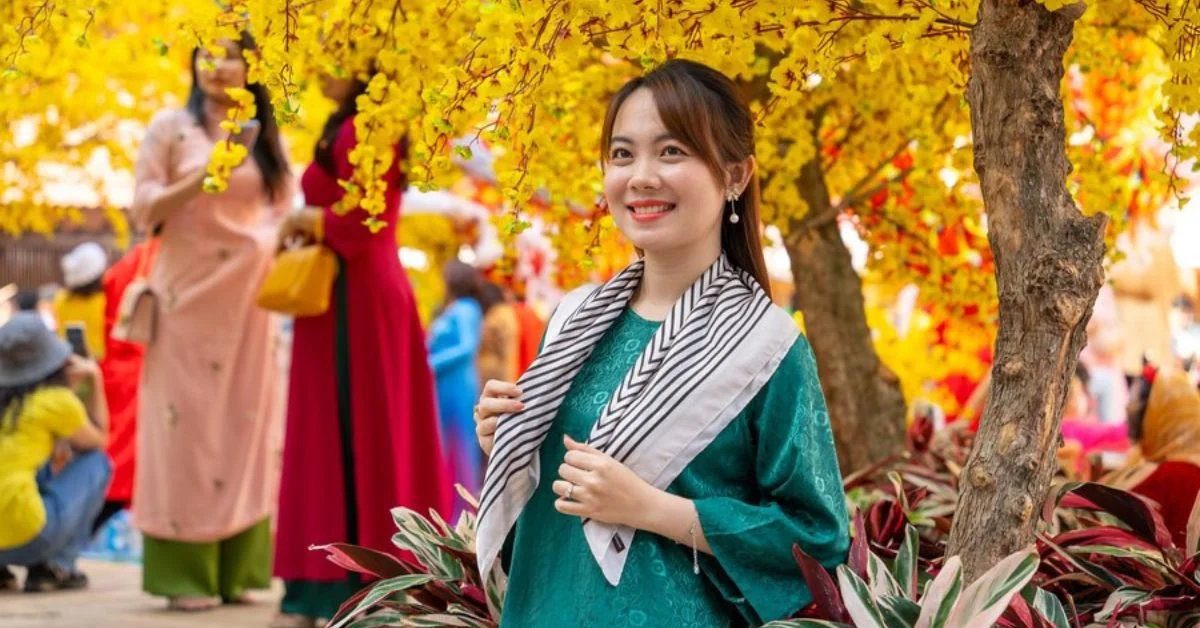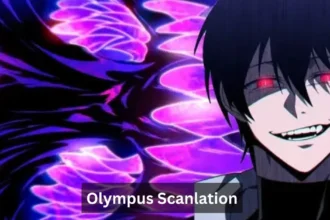Yahatai Kodosai is more than just a festival; it’s a vibrant celebration of tradition, community, and the rich tapestry of Japanese culture. Every year, towns come alive with color and energy as locals gather to partake in this time-honored event that honors history while embracing modernity. From magnificent floats adorned with intricate designs to traditional dances echoing through the streets, Yahatai Kodosai weaves together generations in a joyful expression of shared heritage.
As the sun sets and lanterns light up the night sky, you’ll find people of all ages participating—not merely as spectators but as active contributors to a living tradition. This festival showcases the spirit of togetherness that transcends age and background while reminding us all about the beauty found in our cultural roots. Dive into this exploration of Yahatai Kodosai—its historical significance, its spiritual dimensions, and how it continues to evolve in today’s world.
What is Yahatai Kodosai?
Yahatai Kodosai is a vibrant festival celebrated in Japan, showcasing the rich cultural heritage of communities. It typically takes place during the summer months, transforming streets into lively venues filled with music, dance, and colorful floats.
At its core, Yahatai Kodosai serves as a platform for collective celebration. People come together to honor their traditions while fostering community spirit. The event usually features elaborately decorated floats that symbolize various local deities or historical figures.
The festival also emphasizes participation from all ages. Families gather to enjoy traditional games and delicious street food stalls lining the path of parades. This sense of unity fosters connections among participants and spectators alike.
Beyond entertainment, Yahatai Kodosai represents an enduring legacy passed down through generations—a testament to resilience and cultural pride amid modernization’s challenges. Each year offers a fresh canvas for storytelling through art, performance, and communal involvement.
1. Historical Roots of Yahatai Kodosai
Yahatai Kodosai traces its origins back centuries, deeply intertwined with the history of local communities in Japan. This vibrant festival reflects a rich tapestry of cultural heritage that has evolved through generations.
Originally, Yahatai Kodosai served as an agricultural celebration. Local residents would gather to express gratitude for bountiful harvests and seek blessings for future crops. The event symbolized unity among villagers, fostering strong community bonds.
As time passed, the festival integrated various customs and practices from neighboring regions. It became a melting pot of traditions, showcasing unique elements from different eras while maintaining its core values.
Historical documents reveal that Yahatai Kodosai was also influenced by regional deities worshipped by locals. This connection to spirituality added depth and meaning to the festivities, ensuring it remained relevant over time amidst social changes.
2. Spiritual Significance
The Yahatai Kodosai is steeped in spiritual meaning. It serves as a bridge between the earthly world and the divine. Participants engage deeply, fostering a sense of connection to something greater.
At its core, this celebration honors ancestors and local deities. Rituals are performed to express gratitude for blessings received throughout the year. This reverence instills a profound communal spirit among attendees.
The festival often features offerings made at shrines, where prayers resonate with hopes and wishes. These acts reinforce bonds within the community while inviting divine protection.
Through shared rituals, individuals experience personal transformation alongside collective harmony. The energy of devotion during Yahatai Kodosai creates an atmosphere that transcends everyday life.
For many participants, it’s not just about tradition; it’s a chance to reconnect with their spirituality amid modern challenges. Each moment spent in prayer or reflection enhances understanding of one’s place in both community and cosmos.
3. Influence of Buddhism on the Festival
Buddhism intricately weaves its influence into the fabric of Yahatai Kodosai. The festival, celebrated with vibrant energy, echoes the teachings and philosophies rooted in this ancient faith.
During Yahatai Kodosai, rituals often reflect Buddhist principles such as compassion and mindfulness. Temples become focal points for prayer, where participants seek blessings for peace and prosperity.
The serene atmosphere created by chanting monks adds a spiritual depth to the festivities. These sacred sounds resonate throughout the celebration, reminding attendees of their connection to something greater.
Buddhist motifs frequently adorn floats during parades. Each design tells a story that resonates with both tradition and modernity. Artists blend age-old techniques with contemporary interpretations, enriching the visual splendor.
As community members partake in these practices together, they foster unity through shared beliefs. This melding of culture cultivates an environment where traditions thrive while adapting to new generations’ perspectives.
4. Modern Challenges in Preserving Tradition
As society evolves, traditional festivals like Yahatai Kodosai face modern challenges. Urbanization and globalization often dilute cultural practices, making it difficult to maintain authentic celebrations.
Younger generations are increasingly drawn to global trends rather than local customs. This shift can lead to dwindling participation in time-honored rituals and events that once brought communities together.
Financial constraints also pose a significant hurdle. Organizing large-scale festivities requires funding, which isn’t always available. Sponsorship from businesses may come with strings attached, altering the festival’s essence.
Additionally, balancing tradition with contemporary interests is tricky. While some seek innovation within the festival framework, others argue this risks losing its historical significance. The tension between preserving authenticity and embracing change continues to shape the future of Yahatai Kodosai for years to come.
5. Efforts to Engage the Younger Generation
Engaging the younger generation in Yahatai Kodosai is essential for preserving its vibrant traditions. Organizers are now focusing on interactive elements that resonate with youth culture.
Workshops and hands-on activities allow young attendees to participate actively, from crafting traditional decorations to learning folk dances. This immersive approach creates a personal connection to the festival.
Social media plays a significant role as well. Platforms like Instagram and TikTok help amplify the festival’s reach, showcasing colorful floats and energetic performances in real-time. Young people are encouraged to share their experiences online, fostering community engagement beyond physical boundaries.
Collaborations with local schools also promote awareness of Yahatai Kodosai among students. Educational programs highlight the cultural significance of each ritual, instilling pride in their heritage while cultivating interest.
These efforts not only celebrate tradition but also pave the way for innovative expressions within this cherished celebration, ensuring it resonates with future generations.
6. The Role of Technology in Yahatai Kodosai
Technology has woven itself into the fabric of Yahatai Kodosai, enhancing both participation and engagement. Digital platforms now promote the festival, reaching audiences beyond traditional channels. Social media buzzes with vibrant images and live-streamed events, inviting a global audience to join in the celebration.
Drones capture aerial views of parade floats and crowds, providing a fresh perspective on this age-old tradition. Apps offer schedules, maps, and interactive experiences for attendees navigating the festivities.
Moreover, virtual reality allows those unable to attend to immerse themselves in Yahatai Kodosai from afar. Innovations like augmented reality enrich visitors’ understanding of rituals by overlaying information onto real-world scenes.
While rooted in history, technology ensures that Yahatai Kodosai remains relevant to younger generations who thrive on digital interaction. This blend of past and present provides an exciting platform for cultural exchange.
7. Cultural Importance of Yahatai Kodosai
Yahatai Kodosai stands as a vibrant testament to the rich tapestry of culture in Japan. This festival is not merely an event; it represents the heartbeat of local traditions and community ties.
Each element, from the floats to the dances, tells a story steeped in history. These stories connect generations, weaving old customs into modern life. It’s a space where heritage thrives amidst contemporary influences.
The festival also fosters unity among participants. People come together regardless of age or background, sharing their passion for tradition and celebration. Every smile during Yahatai Kodosai reinforces bonds within neighborhoods.
Moreover, it offers an opportunity for cultural exchange with visitors who are eager to learn about Japanese customs. Through this interaction, Yahatai Kodosai cultivates appreciation for its unique heritage while promoting understanding across cultures.
This dynamic interplay between past and present makes Yahatai Kodosai more than just a celebration—it’s a living legacy that continues to evolve yet remains deeply rooted in cultural significance.
8. Rituals and Activities During Yahatai Kodosai
During Yahatai Kodosai, a myriad of rituals and activities unfold, each rich in cultural significance. The festival begins with vibrant offerings at local shrines, where participants present food and flowers to honor the deities.
As day turns into night, the atmosphere buzzes with excitement. Street stalls line the pathways, offering delicious traditional snacks like yakitori and sweet mochi. Families gather to enjoy these culinary delights while sharing stories from past festivals.
The highlight comes with the parade of elaborately decorated floats. Each float tells a story through intricate designs and craftsmanship. Enthusiastic crowds cheer as they witness this captivating spectacle.
Traditional games also play a significant role during Yahatai Kodosai. Children engage in fun activities such as tug-of-war or ring toss, fostering a sense of community among families.
These rituals not only preserve history but also create memories that bind generations together in celebration.
9. Shinto Rites of Purification
Shinto rites of purification, known as “harae,” play a crucial role during Yahatai Kodosai. These rituals aim to cleanse participants of impurities and spiritual burdens.
As the festival approaches, community members often partake in these cleansing ceremonies, which may include water rituals or symbolic offerings at shrines. This practice fosters a sense of renewal and connection with ancestral spirits.
During the festivities, you might witness individuals splashing themselves with water from sacred rivers or streams—an act that embodies both physical and spiritual cleansing. The emphasis on purity creates an atmosphere ripe for celebration.
These rites not only honor tradition but also deepen communal ties. They remind everyone involved about the importance of mutual respect and shared beliefs within their culture. Such acts enhance the vibrant spirit of Yahatai Kodosai while ensuring that ancient customs remain alive today.
10. Parade of Floats: A Visual Spectacle
The Parade of Floats during Yahatai Kodosai is nothing short of breathtaking. Each float, meticulously crafted, reflects the rich cultural heritage and artistry of the community. Vibrant colors and intricate designs captivate onlookers as they glide through the streets.
These floats often depict local legends or historical events, bringing stories to life in a way that engages both young and old alike. Artisans spend months preparing their masterpieces, pouring passion into every detail.
As music fills the air, dancers accompany the procession with lively performances. The rhythm enhances the festive atmosphere while drawing spectators closer to this immersive experience.
Families gather along the route, sharing laughter and excitement. This communal spirit strengthens connections among residents and visitors alike. It’s not just a parade; it’s a celebration of identity woven together by creativity and tradition.
11. Traditional Dance and Music Performances
During Yahatai Kodosai, traditional dance and music performances take center stage. These cultural displays are a vibrant expression of local heritage.
Dancers adorned in colorful kimono grace the streets with their rhythmic movements. Each step tells a story rooted in history, showcasing both skill and passion.
Accompanying them are musicians playing traditional instruments like taiko drums and shamisen. The beats resonate through the air, creating an infectious atmosphere that captivates everyone nearby.
These performances not only entertain but also educate attendees about age-old customs. Spectators often find themselves drawn into the stories being told through dance and melodies.
Participants of all ages join in on the fun, fostering community bonds without barriers. It’s a heartwarming sight to witness families coming together to celebrate their shared culture while keeping traditions alive for future generations.
12. Community Involvement and Collective Spirit
Community involvement is the heartbeat of Yahatai Kodosai. Residents from all walks of life come together, pooling their energy and resources. This collaboration transforms the festival into a shared experience that transcends individual contributions.
Local families often prepare traditional foods, filling the air with enticing aromas. Friends gather to craft intricate decorations for floats. Each element reflects a commitment to preserving cultural heritage while fostering unity.
The palpable excitement during preparations ignites collective spirit among participants. From children learning old customs to elders sharing stories, every generation plays a role in keeping traditions alive.
Moreover, local businesses join hands with community members, supporting events through sponsorships and partnerships. This synergy creates an atmosphere where everyone feels included and valued.
As attendees witness this vibrant display of teamwork during Yahatai Kodosai, they can’t help but feel inspired by the power of community connection in celebrating tradition together.
13. The Evolving Nature of Yahatai Kodosai
Yahatai Kodosai is not a static event; it constantly evolves while staying true to its roots. With each passing year, new traditions emerge alongside cherished customs.
Local artists and performers infuse fresh creativity into the festivities. They reinterpret classic dances and introduce modern music genres, making the celebration resonate with younger audiences.
The festival has embraced diversity too. Participants now represent various cultures, showcasing an array of performances that enrich the experience for everyone involved.
Social media plays a significant role in shaping Yahatai Kodosai’s narrative. Online platforms bring together enthusiasts from all over the globe, creating vibrant discussions and shared experiences that transcend geographical boundaries.
As community members share their stories digitally, they foster a sense of belonging among those unable to attend in person. This melding of tradition and innovation ensures that Yahatai Kodosai remains relevant while honoring its rich heritage.
14. Yahatai Kodosai as a Tourist Attraction
Yahatai Kodosai draws visitors from across the globe, eager to experience its vibrant culture. The festival’s rich history and colorful traditions create an irresistible allure for tourists.
As people wander through bustling streets adorned with intricate floats, they’re immersed in a sensory feast of sights, sounds, and smells. Local delicacies fill the air with enticing aromas that beckon food lovers to indulge.
Visitors find joy not only in the festivities but also in connecting with locals. Engaging conversations reveal stories behind each ritual and tradition. This sense of community makes Yahatai Kodosai feel like more than just an event; it transforms into a shared journey.
For many travelers, participating in workshops or cultural activities adds depth to their experience. Learning traditional crafts or dance allows them to take home a piece of Japan’s heritage long after the festival ends.
Conclusion
Yahatai Kodosai embodies the essence of community and tradition. Its vibrant celebrations reflect a rich cultural tapestry that has evolved over centuries.
The festival serves as a reminder of the importance of heritage, bringing together people from all walks of life. It fosters connections, igniting a sense of belonging among participants.
As we witness modern influences shape traditions, Yahatai Kodosai remains resilient. The integration of technology presents both opportunities and challenges in preserving its core values.
Together, this celebration not only honors the past but also paves the way for future generations to engage with their roots. The spirit of Yahatai Kodosai lives on through shared experiences and collective joy, ensuring it continues to thrive in our hearts and communities.
FAQs
Q: What is Yahatai Kodosai?
A: Yahatai Kodosai is a vibrant festival celebrated in Japan, showcasing rich traditions and community spirit. It brings together locals and visitors for a lively experience filled with music, dance, and spiritual significance.
Q: When does Yahatai Kodosai take place?
A: The festival typically takes place during the summer months. Exact dates may vary each year depending on local customs.
Q: What are some key activities during Yahatai Kodosai?
A: Attendees can enjoy parades of beautifully decorated floats, traditional dance performances, Shinto purification rites, and plenty of delicious food stalls featuring local cuisine.
Q: Is there an entrance fee to attend the festival?
A: Most events associated with Yahatai Kodosai are free to attend. However, some specific activities or areas might have nominal fees.
Q: How can I get involved in the next Yahatai Kodosai celebration?
A: Local communities welcome participation from anyone interested. Volunteer opportunities often arise leading up to the event—check social media or community boards for more information.
Q: What measures are being taken to preserve tradition amid modern challenges?
A: Communities actively engage younger generations through workshops and educational programs while embracing technology as a bridge between tradition and contemporary practices.
Q: Are there accommodations available near the festival location?
A: Yes! Many hotels and guesthouses cater specifically to tourists visiting yahataki kodosai celebrations. It’s best to book early due to high demand around festival time.
If you seek an immersive cultural experience that celebrates history while fostering unity among people, then attending yahatai kodosai is something you should not miss out on!

















